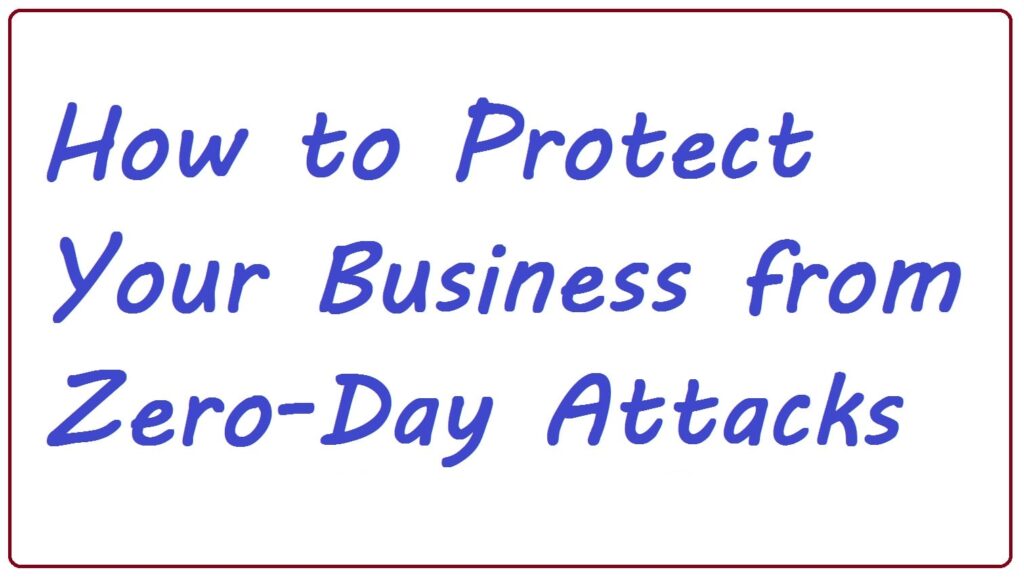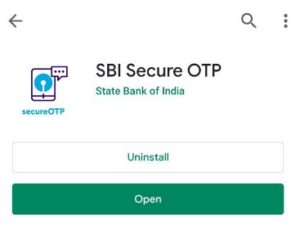How to Protect Your Business from Zero Day Attacks
How to Protect Your Business from Zero Day Attacks: A zero-day vulnerability refers to a flaw within a computer system that remains unnoticed by those affected, making it susceptible to exploitation by malicious actors. A zero-day attack entails an assailant’s endeavor to infiltrate, compromise, or cause harm to a system by exploiting an unknown vulnerability. Given the absence of established defenses during such an attack, the likelihood of success for the attacker is significantly heightened.
To mitigate the risks associated with zero-day attacks, organizations can employ various defensive measures. While complete prevention is not feasible, implementing the following four measures can provide substantial protection against zero-day threats: integrating zero-day protection with Microsoft Windows 2010, utilizing Next-Generation Antivirus (NGAV), establishing efficient patch management practices, and devising a robust incident response plan.
This article covers the following topics:
- Understanding zero-day exploits
- Examples of zero-day attacks
- Four recommended practices for safeguarding against zero-day attacks
- Zero-day threat protection with Cynet
What Are Zero-Day Attacks?
A security breach attack is zero-day when the exploited protocol is new for the system itself. The weakness in the software could have been present from its launch. As the fault line is new, antivirus software also couldn’t detect it. This puts all the pressure on the network administrator, and they have to be quick on their feet. The software developers have to roll out an update as soon as possible.

Since the data is already exposed, it is a race against time to tie up the loose end. The update needs to roll out before any hackers can get into the system. Stopping the initial attack might not be possible most of the time. Although the update should mitigate future losses. It needs to remove the malicious code in the software and also close the entry point.
The Timeline of a Zero-Day Exploit
Security researchers Bilge and Dumitras identify seven key stages that encompass the life cycle of a zero-day attack:
- Introduction of vulnerability: Vulnerable code is either released as part of a software application or deployed by users.
- Release of exploit in the wild: Attackers discover the vulnerability and identify techniques to exploit it.
- Discovery of vulnerability by vendor: The vendor becomes aware of the vulnerability, though a patch is yet to be made available.
- Public disclosure of vulnerability: The vendor or security researchers publicly announce the vulnerability, creating awareness among users and attackers alike.
- Release of antivirus signatures: Antivirus vendors can detect the signature of zero-day malware created by attackers, offering protection against known strains. However, the possibility of alternative exploitation methods remains.
- Release of patch: Eventually, the vendor releases a fix for the vulnerability, with the timeframe ranging from a few hours to several months, depending on the complexity and prioritization of the fix.
- Completion of patch deployment: Even after a patch is released, its deployment may take time. Organizations lacking organized patch management processes and home users who ignore software update notifications may be exposed to potential attacks.
The window of exposure spans from stage 1 to stage 7, during which systems are vulnerable to attack. The most critical period lies between stages 2 and 4 when attackers possess knowledge of the vulnerability while others remain unaware.
Following the public disclosure of the zero-day vulnerability, subsequent attacks may occur. Attackers who manage to breach affected systems before antivirus updates or patch deployments have taken place stand a higher chance of success.
Systems Prone to Zero-Day Attacks
Zero-day attacks can exploit vulnerabilities in various systems, including:
- Operating systems: Due to their widespread use and the opportunities they offer attackers to gain control over user systems, operating systems present an appealing target for zero-day attacks.
- Web browsers: Unpatched vulnerabilities within web browsers can enable attackers to execute scripts, perform drive-by downloads, or even run executable files on user machines.
- Office applications: Malware embedded in documents or other files often exploit zero-day vulnerabilities present in the underlying applications used to edit them.
- Open source components: Certain open source projects lack active maintenance or robust security practices. Software vendors may unknowingly utilize these components, thereby exposing themselves to the vulnerabilities present within them.
- Watering holes: Software programs widely used by organizations or home users attract the attention of attackers who search for unknown vulnerabilities within them.
- Hardware: Vulnerabilities within routers, switches, network appliances, and home devices like gaming consoles can provide attackers with an avenue to compromise these devices, disrupting their operations or employing them to construct extensive botnets.
- Internet of Things (IoT): Connected devices, ranging from home appliances and televisions to sensors, connected cars, and factory machinery, are all susceptible to zero-day attacks. Many IoT devices lack mechanisms for software patching or updates.
Four Essential Practices for Zero-Day Attack Protection
Given the inherent difficulty in defending against zero-day attacks, organizations can adopt several strategies to prepare and minimize the associated risks. The following four best practices can effectively reduce or eliminate the threat posed by zero-day attacks:
- Utilize Windows Defender Exploit Guard
- Starting from Windows 2010, Microsoft introduced Windows Defender Exploit Guard, which encompasses several features providing robust protection against zero-day attacks:
- Attack Surface Reduction (ASR): Blocks malware infection by obstructing threats originating from Office files, scripts, and emails. ASR detects and prevents the execution of malicious, obfuscated macro code, JavaScript, VBScript, PowerShell scripts, and payloads downloaded from the internet or embedded in emails.
- Network protection: Exploit Guard halts all outbound connections until they are thoroughly evaluated, thereby preventing malware from establishing communication with command-and-control servers. Outbound network traffic undergoes scrutiny based on hostname and IP reputation, terminating any connection to untrusted destinations.
- Controlled folder access: Monitors changes made by applications to files within protected folders, effectively restricting unauthorized access. This preventive measure prevents ransomware from encrypting files by only allowing authorized applications to access critical folders.
- Starting from Windows 2010, Microsoft introduced Windows Defender Exploit Guard, which encompasses several features providing robust protection against zero-day attacks:
- Leverage Next-Generation Antivirus (NGAV)
- Traditional antivirus solutions relying on file signatures for malware detection prove ineffective against zero-day threats. Nevertheless, they still serve a purpose, as once the vulnerability becomes public knowledge, antivirus vendors promptly update their malware databases, enabling antivirus software to identify and counter the threat.
- To address unknown zero-day malware strains, organizations should employ Next-Generation Antivirus (NGAV) solutions. These solutions harness threat intelligence, behavioral analytics, which establish behavioral baselines for systems and detect suspicious and anomalous activities, and machine learning code analysis to identify systems infected with previously unseen malware strains. NGAV can block malicious processes and impede the spread of attacks across endpoints.
- While NGAV cannot detect all zero-day malware, its utilization significantly reduces the likelihood of attackers successfully breaching systems using unknown malware strains. Cynet’s NGAV feature offers an example of a comprehensive security platform integrating NGAV with other security capabilities.
- Implement Patch Management
- Every organization should establish a comprehensive patch management policy and process, ensuring clear communication among all employees and coordination between development, IT operations, and security teams.
- Automation plays a crucial role in patch management, particularly in larger organizations. Patch management solutions automate patchsourcing from software vendors, identify systems requiring updates, test patch changes, and automatically deploy patches to production environments. This streamlines the deployment process, eliminates delays, and reduces the likelihood of leaving legacy systems behind during updates.
- While patch management cannot prevent zero-day attacks, it significantly narrows the window of exposure. In the event of a severe vulnerability, software vendors may release patches within hours or days. Automated patch management enables organizations to swiftly deploy these patches, thwarting attackers’ attempts to exploit vulnerabilities within their systems.
- Prepare an Incident Response Plan
- Organizations of all sizes benefit from having a well-defined incident response plan that provides a structured approach to identifying and addressing cyberattacks. Creating a dedicated plan for zero-day attacks confers a considerable advantage during such incidents, reducing confusion and mitigating potential damage.
- When developing an incident response plan, it is advisable to follow the six stages outlined by the SANS Institute:
- Preparation: Perform a risk assessment, identify critical assets, and document roles, responsibilities, and processes.
- Identification: Establish methods for detecting potential zero-day attacks, validate the presence of an attack, and determine the additional data necessary to address the threat.
- Containment: Take immediate steps to isolate and contain the incident, preventing further damage. Develop longer-term measures to clean and restore affected systems.
- Eradication: Identify the root cause of the attack and implement measures to prevent similar incidents in the future.
- Recovery: Bring production systems back online, conduct thorough testing, and monitor the systems to ensure they return to normal operation.
- Lessons Learned: Conduct a retrospective analysis within two weeks of the incident to review tools, organizational processes, and identify areas for improvement in preparation for future attacks.
Preventive Measures Against Zero Day Attacks
The computer worm attacking your OS vulnerability can cause a lot of damage. Hackers can reach thousands of devices before an updated OS or software gets rolled out. There are some ways administrators can stop this from happening, though.
Proactive Security Measures
Proactive measures can buy developers more time to reconvene. You are running against time to mitigate potential losses with an exposed system. A proactive security system can warn you of malicious intent and suspicious activity. It is a good practice to ensure an updated Antivirus software that works. The antivirus might not pinpoint the exploitative attack. Although it can notify you of any foul play as it happens.
Moreover, strict firewalls can help in keeping unwanted attackers out of your system. Nothing guarantees a secure system. While these security measures can help control the spread.
Quick Security Updates
One of the best ways to lock out attackers is releasing a security update as soon as possible. You need to roll out patches to malicious code and updates ASAP. Time is of the essence, so you should not wait for a quiet time to update your operating system. You should also update all linked devices as soon as the update is ready. Waiting can only increase the chances of the attack spreading to the entire network.
External Cybersecurity Experts
Many SMEs do not hire external cybersecurity experts and cloud services. This means that they will have to deal with zero-day attacks on their own. Often, the team is unable to handle the severity of the situation and falls short. You should consider a cloud provider that can manage your hosting for you. Self-hosted solutions that are on-site could leave you in a more vulnerable situation. A managed hosting service can assist you better when a situation like this arises. They can help in bringing up all systems that are down and help with a quicker solution. They can often have cybersecurity experts on board that can mitigate your losses.
Network Lockdown Protocols
Preventative measures can restrict the damage if your system is under attack. A locked-down network can be one of the best ways to do this. All parts of your system should be able to lockdown if one of them is under attack. It helps if departments in your organization don’t have access to other’s data. For example, the sales channel and marketing channel should be separate. Such a protocol can ensure that not all parts of your network come under threat. The automatic mitigation protocols can make your system better protected.
Zero-Day Attack: A Recent Example
Attackers accessed a Microsoft Exchange server in January 2021. The server handles emails, calendars, and other Microsoft tools. It took only three months to patch up the loophole. An allegedly Chinese affiliate had already accessed much of the data which will protect from Zero Day Attacks.
Must Read: SDMoviesPoint Telugu Movies





